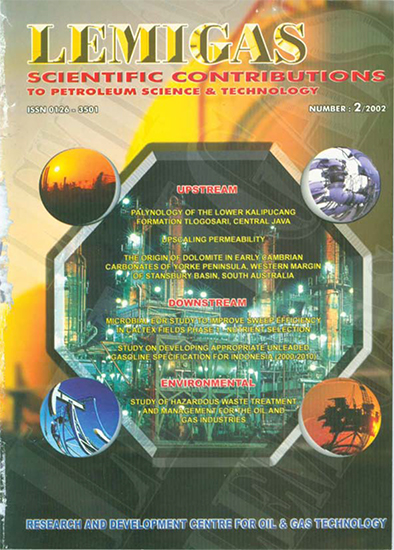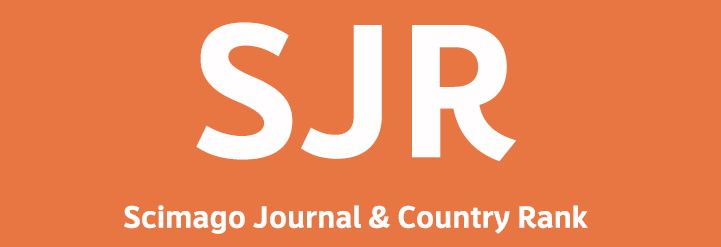STUDY OF HAZARDOUS WASTE TREATMENT AND MANAGEMENT FOR THE OIL AND GAS INDUSTRIES
DOI:
https://doi.org/10.29017/SCOG.25.2.1069Keywords:
Hazardous, Oil And Gas, ResultsAbstract
Study of hazardous waste treatment and management for the oil and gas industries has been conducted by Lemigas Team to observe the existing guidelines and the implementation of the guidelines in hazardous waste management. The study also includes a selection of the government regulation that should be considered in the hazardous waste treatment and management for the oil and gas industries. Results of the study indicate that the oil industry does not conduct treatment processes for all hazardous wastes that are generated. Some of them, especially those of non-specific hazardous wastes are stored in a temporary storage facility and managed off site for treatment or disposal to a commercial hazardous waste facility. The off-site waste management requires the use of a document termed a manifest for tracking its transport on a "cradle-to-grave" basis. The most prominent problem faced by the oil production industries, however, is the vast generation of wastes from production operation activities such as drilling mud, oil contaminated soil, and oil tank sludge and pit sludge. All of these wastes need to be handled properly. This paper presents the results of the study describing the existing guidelines used by the oil and gas industry and its implementation as well as reviewing the government regulation related to hazardous waste management and the technologies that can be applied in mitigating the hazardous wastes generated by the oil and gas industries.References
Anonymous, 1994, The Government Regulation of the Republic of Indonesia (PP) No.
/1994 describing Hazardous Waste Management.
Anonymous, 1995, BAPEDAL Decree No. Kep. 04/ Bapedal19/1995.
Anonymous, 1998, Waste Management Guideline, PT. Caltex Pacific Indonesia,
Pekanbaru. Riau.
Anonymous, 1999a. The Government Regulation of the Republic of Indonesia (PP) No.
/1999 describing Hazardous Waste Management.
Anonymous, 1999b, The Government Regulation of the Republic of Indonesia (PP)
No.85/1999 describing the Revisions of The Government Regulation of the Republic
of Indonesia (PP) No. 18/1999.
Barth, E.F., et al., 1990, Stabilization and Solidification of Hazardous Wastes, Noyes
Data Corporation, Park Ridge, New Jersey, USA.
Burton, D.J. and Ravishankar, K. 1989, Treatment of Hazardous Petrochemical and
Petroleum Wastes. Current, New, and Emerging Technologies, Noyes Publications,
Park Ridge, New Jersey, USA.
Cote, P and Gilliam, M., Environmental Aspects of Stabilizartion and Solidification of
Hazardous and Radioactive Wastes. STP 1033, American Society for Testing and
Materials, Philadelphia, USA.
LaGrega, M.D., Buckingham, PL, and Evans, J.C, 1994, Hazardous Waste
Management, McGraw- Hill, Inc., New York.
Mulyono, M. et al., 2000a, Laboratory Test Study on the Treatment Process for the
Sludge-Asphalt Mixture, Unpublished report, IPAS No. 542690, Vico Indonesia,
Jakarta.
Mulyono, M. Desrina, R. and Legowo, EH, 20006, Pemanfaatan Limbah Lumpur
Berminyak (Oily Sludge) melalui Proses Solidifikasi dengan Aspal Buton untuk
Pembuatan Material Jalan- 1. Kajian Bahan Struktur Jalan (Indonesian), Lembaran
Publikasi LEMIGAS, Vol. 34, No 3/2000.
Mulyono, M. et al., 2001a, Laboratory Test Study on the Treatment Process for the Oily
Solid Waste of B-101. Unpublished report. IPAS No. 546240, AFE-50404, Vico
Indonesia, Jakarta.
Mulyono, M. et al., 2001b, Pemanfaatan Limbah Lumpur Berminyak (Oily Sludge)
melalui Proses Solidifikasi dengan Aspal Buton untuk Pembuatan Material Jalan
Keekonomian (Indonesian), Lembaran Publikasi LEMIGAS, Vol. 35, No 2/2001.
Mulyono, M. et al. 2001c, Study of Hazardous Waste Treatment and Management in
CPI's Area of Operation, Unpublished Report, No. 001/EA-LMG/B3/ 2000, PT.CPI,
Rumbai, Riau
Downloads
Issue
Section
License
Copyright (c) 1970 SCIENTIFIC CONTRIBUTIONS OIL AND GAS (SCOG)

This work is licensed under a Creative Commons Attribution 4.0 International License.
Authors are free to Share — copy and redistribute the material in any medium or format for any purpose, even commercially Adapt — remix, transform, and build upon the material for any purpose, even commercially.
The licensor cannot revoke these freedoms as long as you follow the license terms, under the following terms Attribution — You must give appropriate credit , provide a link to the license, and indicate if changes were made . You may do so in any reasonable manner, but not in any way that suggests the licensor endorses you or your use.
No additional restrictions — You may not apply legal terms or technological measures that legally restrict others from doing anything the license permits.














